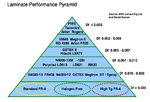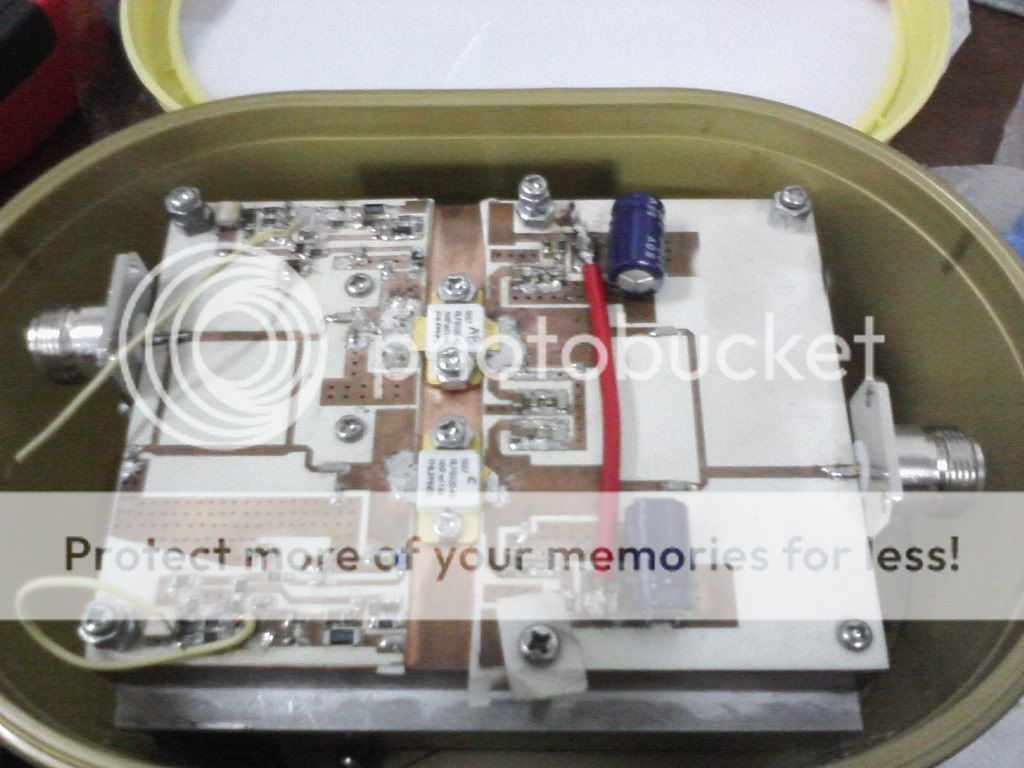darwinxie
Junior Member level 2
Hi all, I am designing a Doherty power amplifier for final project. The main amplifier is biased in class AB using NXP LDMOS BLF6G20-45 transistor.
The datasheet shows that the threshold voltage (Vth) is about 1.9 V. I biased it in 2.2V in order to go into class AB. The current at the drain is measured 0.8 A, which is far below the maximum rating (13 A). However when the power amp being tested using spectrum analyzer, a spark of fire appeared between drain and source of main amplifier.
This in turn made my transistor not working anymore (I checked it with a buzzer and the drain-source has been connected even after I disassemble the transistor) . I've wasted 2 transistors this way.
I've checked other possible short connection from bypass capacitors, bias circuit, etc. But it seems the problem only appears when the power amplifier being operated in the operating frequency (1.8 GHz).
Here I attach my PCB layout. I used almost all SMD components for bias circuit, bypass, matching circuits, and snubber.
What do you think the root cause of my problem? I predict the power combiner at the output caused some signal to be reflected back to the transistors, although in ADS simulation the overall performance is satisfying enough.
I appreciate your help.
Thank you..
**broken link removed**
The datasheet shows that the threshold voltage (Vth) is about 1.9 V. I biased it in 2.2V in order to go into class AB. The current at the drain is measured 0.8 A, which is far below the maximum rating (13 A). However when the power amp being tested using spectrum analyzer, a spark of fire appeared between drain and source of main amplifier.
This in turn made my transistor not working anymore (I checked it with a buzzer and the drain-source has been connected even after I disassemble the transistor) . I've wasted 2 transistors this way.
I've checked other possible short connection from bypass capacitors, bias circuit, etc. But it seems the problem only appears when the power amplifier being operated in the operating frequency (1.8 GHz).
Here I attach my PCB layout. I used almost all SMD components for bias circuit, bypass, matching circuits, and snubber.
What do you think the root cause of my problem? I predict the power combiner at the output caused some signal to be reflected back to the transistors, although in ADS simulation the overall performance is satisfying enough.
I appreciate your help.
Thank you..
**broken link removed**
Last edited:



